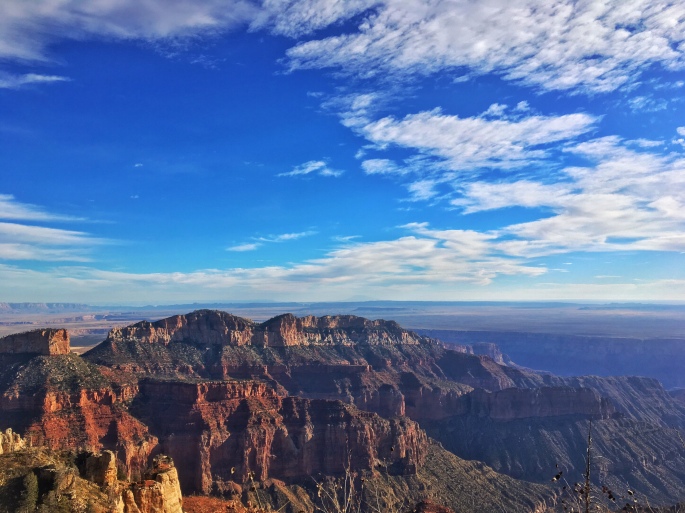
History and Stats
The Grand Canyon officially became a National Park on February 26, 1919, signed into law by President Woodrow Wilson. Though President Theodore Roosevelt had given it status as a National Monument in 1908, he was working as part of a long-going effort at preserving the park dating back to the 1880s, largely led by then-Senator Benjamin Harrison.
Roosevelt is well-known for his oratory skills, and had this to say of the Grand Canyon in 1903:
“The Grand Canyon fills me with awe. It is beyond comparison—beyond description; absolutely unparalleled throughout the wide world… Let this great wonder of nature remain as it now is. Do nothing to mar its grandeur, sublimity and loveliness. You cannot improve on it. But what you can do is to keep it for your children, your children’s children, and all who come after you, as the one great sight which every American should see.”
The Grand Canyon Lodge and its attendant cabins were constructed in the last 1920s, and the lodge itself was declared a National Historic Landmark on May 28, 1987. The structure was designed by architect Gilbert Stanley Underwood. Under the employ of the Union Pacific Railroad, he constructed similar facilities at Zion, Bryce Canyon, and Yosemite. The structure stands at one of the endpoints of the Bright Angel Trail, the other being the Kolb House on the South Rim.
Date Founded: February 26, 1919; Declared a UNESCO World Heritage Site in 1979
Size: 1,901.972sq Miles
Elevation: 8,803ft (Point Imperial)
Rainfall: 27in; 142in of snow
Visitors: Nearly 6 million a year
Open: May 15 through October 31
Fees: Entrance Fees are on a weekly basis and range from $15 (single, bicycle or on foot) up to $30. *We will note that these fees are covered completely by the America The Beautiful Pass, which applies to over 2,000 different sites.
Mission
“To preserve unimpaired the natural and cultural resources and values of the national park system for the enjoyment, education, and inspiration of this and future generations.”
The North Rim has an emphasis on hiking and general appreciation for nature. It has fewer creature comforts and facilities than the South Rim, so the focus is very much on the Grand Canyon itself and the wide variety of trails offered.
Facilities
The North Rim Visitor Center is open from 9-6 from May 15 to October 15, and offers free wi-fi, computers, regional information and on-hand rangers to field questions and help plan your trip. There are also a number of dining options on the campus, which can be found here.
There is a gas station inside the park (while cashier hours vary, pumps accept credit card 24 hours a day), with the ability to do minor repairs if necessary, along with a Camper Store located at the Campground (open 7-8), as well as two separate gift shops; Grand Canyon Association Park Store, (open 8-6) pm and the Grand Canyon Lodge Gift Shop, (open 8-9). A Post Office is also on site and open from May 15th to October 15.
Closest Civilization
Jacob Lake, a small, unincorporated town on Route 67, is 45 miles away from the North Rim, and bills itself as the gateway to the Grand Canyon. There are hotels, restaurants, a gas station, and stores. The National Forest Service also has a visitor center there.
Further along Route 67 towards the Grand Canyon is the North Rim Country Store, which has gas, propane and a small grocery store. The South Rim, while a bit of a drive, is not lacking for creature comforts for those looking for a less rugged experience.
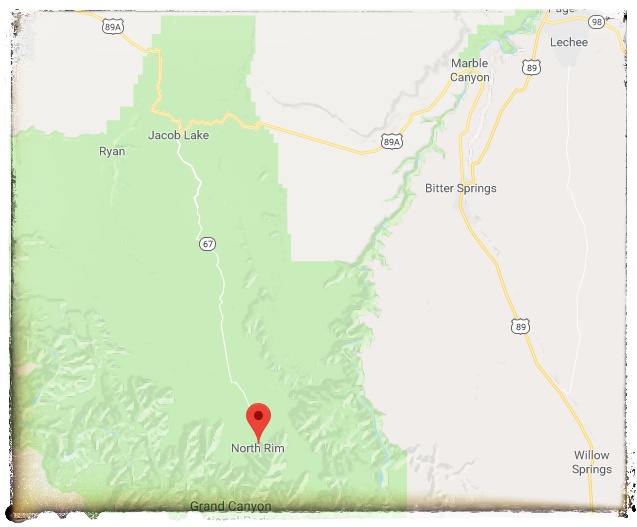
Lodging
The cabins and lodge are run by Forever Resorts, and booking information can be found here. Prices range from $132/night to just shy of $200. There are additional motel and hotel options further away from the park.
The North Rim campground sites can be had for $18-25, though some discounts are offered with various ATB Passes. The campground can accommodate both tents and RVs, and features coin-operated laundry and showers, potable water, accessible campsites and bathrooms and site grills. There is also a ranger station and convenience store.
Groups sites can be had for $50/night for up to 25 people. Sites can be booked online here or by calling 1-877-444-6777.
Kaibab National Forest, just outside Grand Canyon National Park, has free dispersed camping sites, which are about a half hour to 45 minutes away from the lodge. The sites are primitive, with designated fire rings. More information can be found here.
Camping Level
Newbie to Intermediate, or not at all, should you opt to stay in one of the cabins or hotel. The North Rim campground has plenty of amenities, but the sites in Kaibab are the exact opposite. While there were sites available at the North Rim when we came, we opted to stay in Kaibab for free. Our Newbie Camping Gear Guide can be found here. For those looking to pitch a tent, our Novice Camping Gear Guide can be found here. Campers looking for a more wild experience can find our Intermediate Camping Gear Guide here.
Seasonal Programs
Ranger lectures featuring cultural history, geology and wildlife can all be found at the North Rim Visitor Center. Programming runs all day from 8am beginning with a guided walk and continues until 8 in the evening. Full information can be found here.
Our experience
Out of the three vantages we’ve had of the Grand Canyon (North, South, and East), the North Rim was probably the most peaceful and contemplative. It was relaxing and therapeutic, and will always stick out in our minds, as Bright Angel Point was the first time either of us saw the Grand Canyon in its expansive glory.
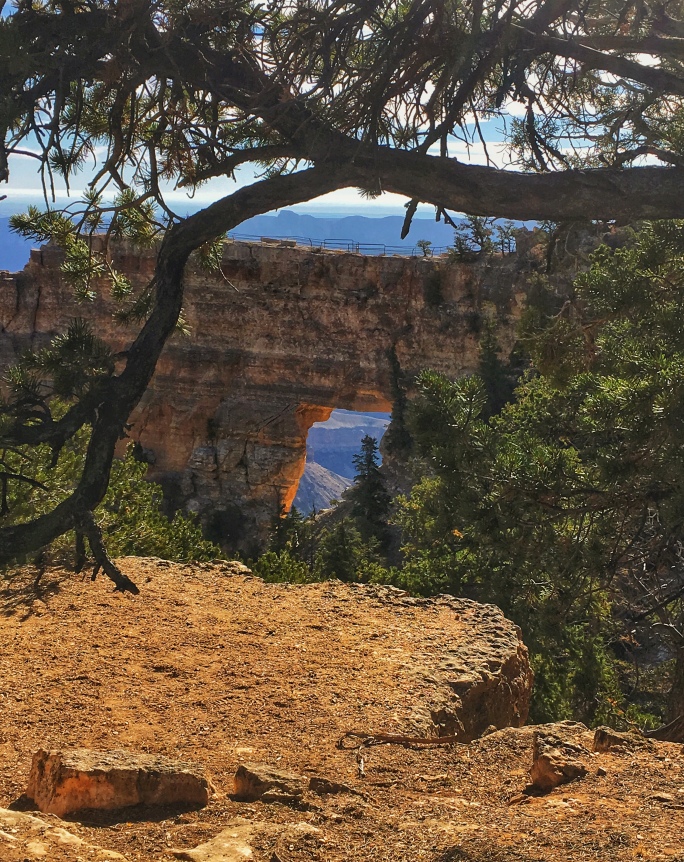
Things we’d like to try next time
We would likely camp inside the park next time and take a hike or two, and we’re always up for the ranger programming offered, but after hitting so many of the vistas offered, we felt pretty good about having a fairly complete visit at the North Rim.
Special Note
- Because the North Rim experiences less visitor traffic than its Southern cousin, it can be fairly easy to have entire vistas to yourself without waking up painfully early.
- While the lodge and Visitor Center closes on October 15th, the campground can still be booked up until October 31st.
- Leashed pets are permitted, though not on the rim itself, and there are no kennel facilities, unlike the South Rim.
- Stay on the lookout for Steller’s Jays, a striking and metallic blue cousin to its East coast counterparts. They tend to hide in the shade of juniper trees.
- Ravens are known for their communication skills, and if you’re lucky and quiet, one may decide to take a perch and have a conversation with you.
- On average, 12 people die at the Grand Canyon per year. While some may fall to their death, much more common are hiking-related fatalities (Source).
- In 1978, the North Rim received 23 feet of snow, which is the current record, but in a given year, receives more than double what the South Rim receives.
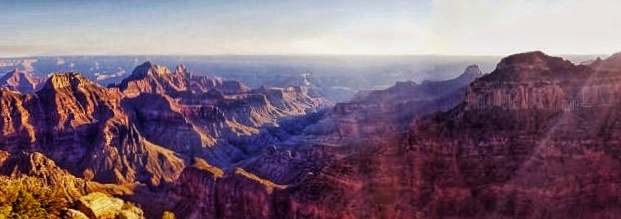
What vista was your favorite? Did you stay in one of the cabins? Which rim is your favorite? Did we miss anything?
Check out more of our guides to the National Parks.
Check out our guide to the East Rim or the South Rim before you plan your trip!
Read more about our experience at the Grand Canyon National Park’s North Rim here.
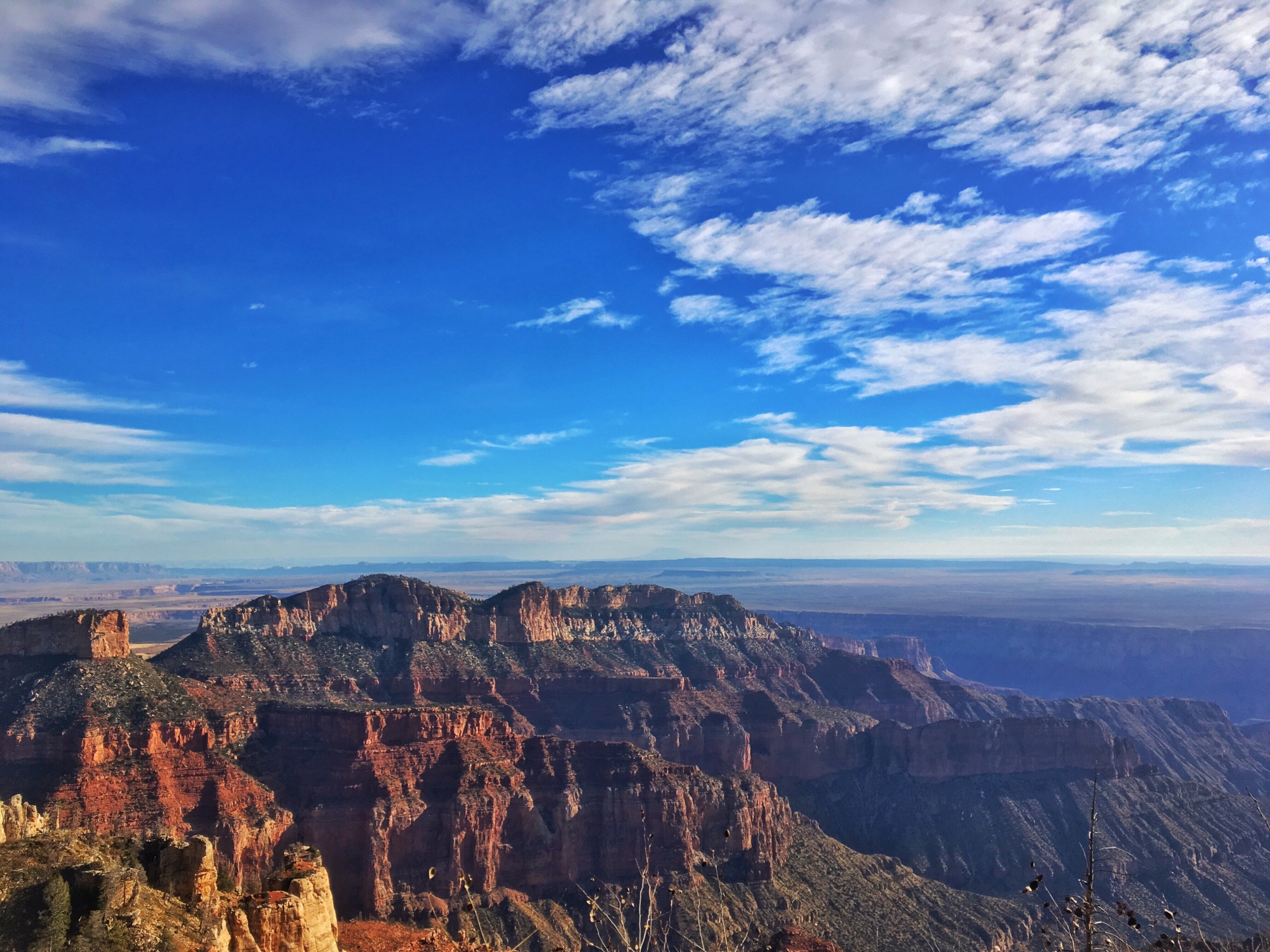

The North Rim is definitely my favorite side of the Grand Canyon. Glad you guys had a great experience there. Love the quote.
LikeLiked by 1 person
We’d have to agree. We want to check out the West Rim, but as far as NPS sites go, we’re all about the North Rim. Thanks for reading!
LikeLike
The north rim sounds like it is the perfect mix of peacefulness without the crowds but with a little bit of civilization.
LikeLiked by 1 person
It was really nice. The museums on the South Rim are great, but there’s something to be said for quiet and simple contemplation of the natural beauty.
LikeLike